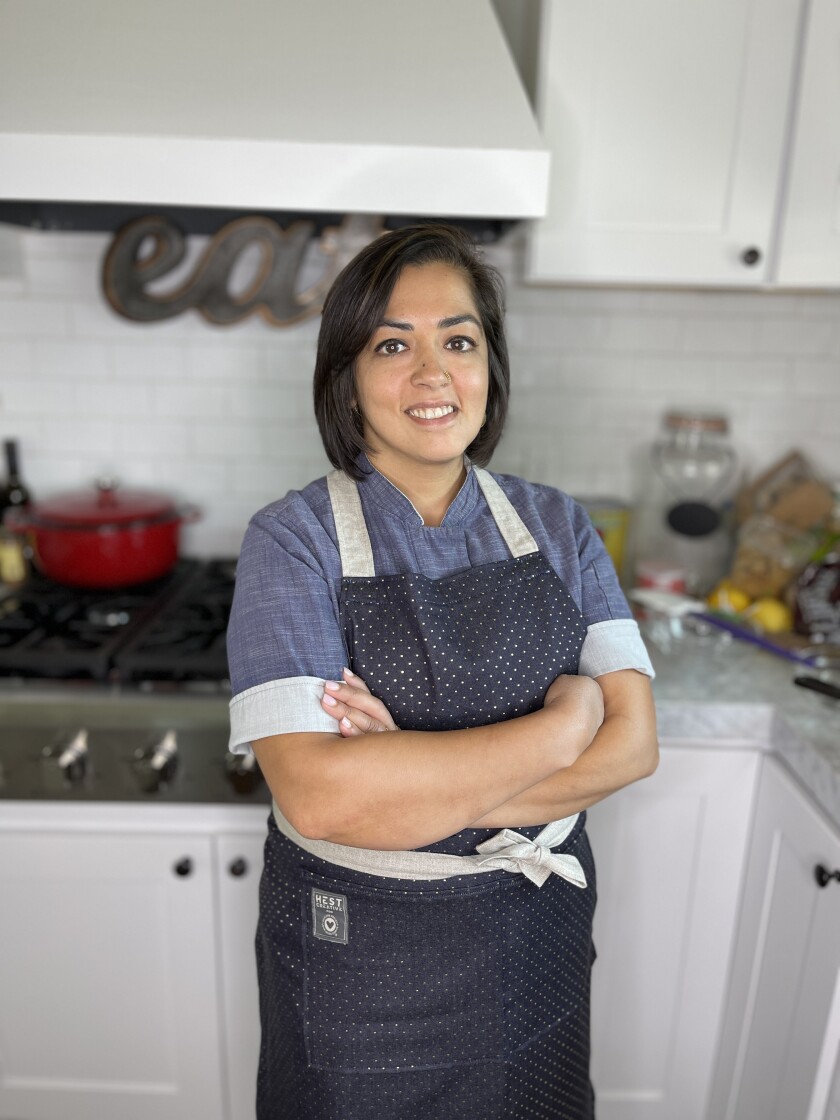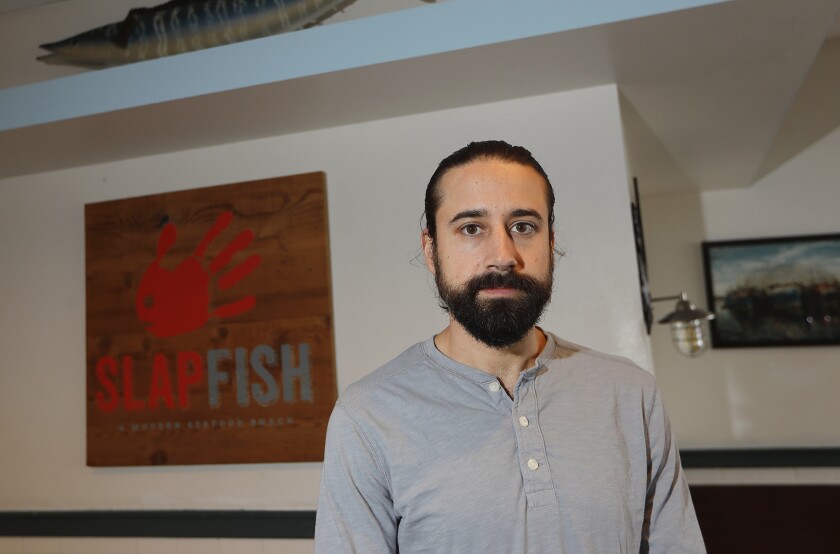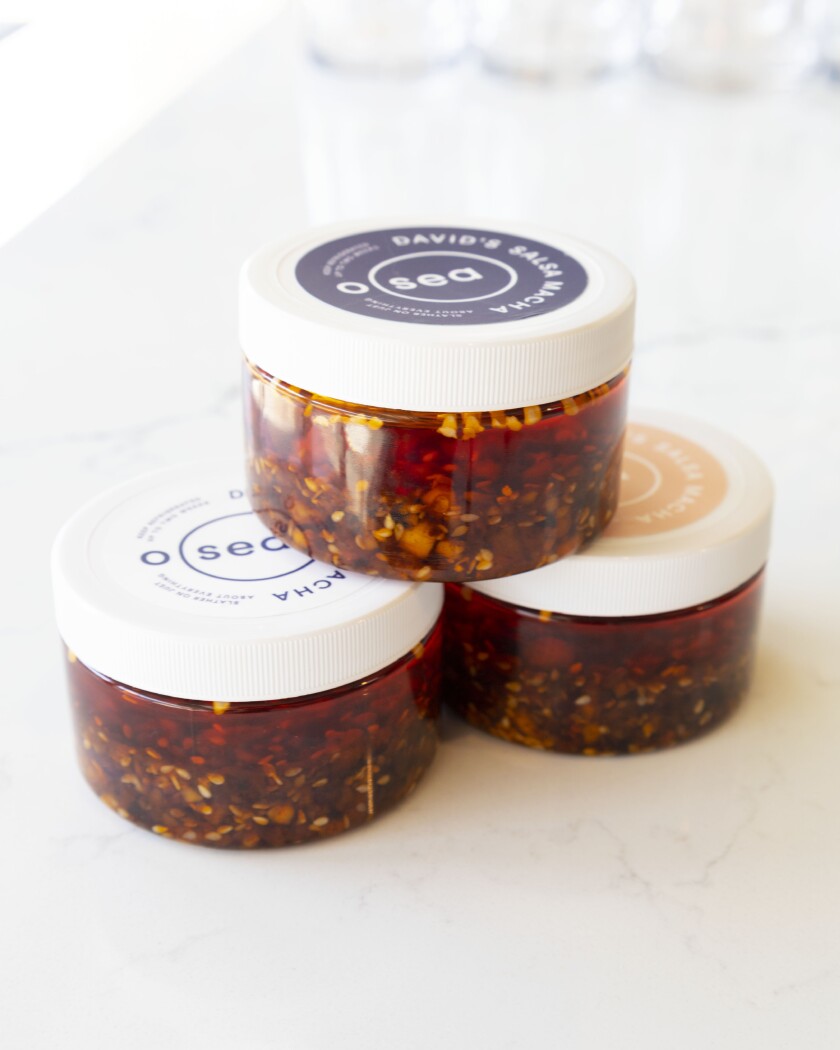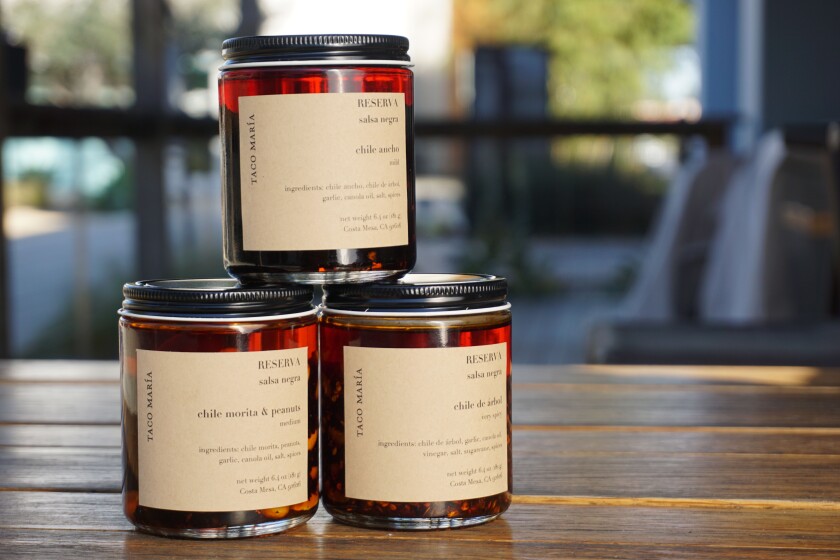The road to making Chef Shachi Mehra’s line of Spice Girl Sauces a reality began when she competed on the Food Network’s show “Chopped” back in 2019.
“When they asked, ‘What are you going to do with your winnings?’ I said I was going to start a sauce line,” says Mehra, who is the chef/owner at Adya Indian street food restaurants in Anaheim and Irvine.
It was the first time she talked about her sauce line idea to anyone besides her friends and family.
Mehra did end up winning in the final round of Season 43, Episode 7 of “Chopped.”
“Well, now I just said it on national TV,” Mehra recalls thinking. “I better get this thing rolling.”
Then when the pandemic hit, she became focused on making sure her restaurants survived. It seemed like a good time to develop a brand that was separate from the physical locations.

“I wanted the sauce really to have its own identity because when people think of Adya, they think of Indian food, and I want this sauce to be more than just Indian,” says Mehra.
Spice Girl Sauce Original Hot Sauce is the first in the line of sauces Mehra has spent the past couple years developing. Her husband, Maneesh Rawat, was insistent her face be on the label, an idea Mehra says she originally wasn’t wild about.
“I thought it would be super weird,” she says.
But in the end Mehra says she saw the importance of putting a female Indian founder on the label.
Although the sauce flavors are Indian influenced, Mehra says the sauce isn’t just for Indian food.
“This is a sauce you can put on your breakfast sandwich or on your tacos or on a BLT or in your pasta …anywhere you want to add a level of flavor and heat,” says Mehra. “It is still rooted in Indian flavors and it has that Indian soul, but it still works on a lot of stuff.”
The Indian soul comes from cumin, garlic, four different chiles and black pepper. The depth of flavor comes from the way those different ingredients are layered into the sauce that comes in a 6-ounce bottle for $10.
“The garlic is roasted, the cumin is bloomed in oil and the black pepper is bloomed in oil, and all of these things are cooked and then mixed together,” she says.
It’s a method Mehra says leads to a complexity consumers are hard-pressed to find outside of Indian cuisine.
“The thing that makes you want to go back and eat it again is that there is so much happening in your mouth, and that to me is really what makes Indian food so fascinating and interesting,” she says. “It is the layers of flavor that we inherently have in our food.”

Mehra isn’t the only local chef getting saucy. Other Orange County chefs are heating things up with bottled and jarred hot sauces too.
Most recently the Huntington Beach fast-casual seafood restaurant, Slapfish, has entered the market with a line of three hot sauces launched just last week.
Chef Andrew Gruel introduced three hot sauces flavors; cali verde, pineapple habanero and Trinidad pepper, which can be purchased on the Slapfish website for $8 a bottle.

Forward-thinking seafood concept, O Sea in Old Town Orange also sells its own salsa.
“The salsa macha was actually one of the first recipes we wrote,” says O Sea owner, Mike Flynn. The restaurant serves the popular salsa over burrata cheese to create a dish that Flynn describes as Old World meets New World.
“We are taking this old, traditional, Italian cheese and serving it in what we think is a very Southern California set, with salsa macha,” says Flynn.
The salsa is made from dried chilies, garlic, almonds, sesame seeds, vinegar and honey, giving it a flavor that is sweet, spicy and nutty. Flynn says the restaurant received so many requests for the salsa macha, owners developed a packaging program and began selling it at O Sea in 4-ounce jars for $7.95 in late August.
“It is jarred in-house and has about a two-week shelf life,” says Flynn. “The feedback I have gotten from our guests is it doesn’t really matter because it doesn’t last two weeks in your fridge. It is usually finished before then.”
Flynn says guests have also made requests for the restaurant’s cocktail-style sauce it serves with oysters that he calls a Thai red curry sauce.
“We can have that conversation if the demand is there,” says Flynn, “but right now we just want to focus on the one product. It is a really special product.”

At Taco Maria in Costa Mesa, Chef Carlos Salgado’s salsa negra has been a mainstay since the early days.
Also sometimes referred to as salsa macha, the salsa contains chile de árbol, garlic and sugarcane.
“Salsa negra has been a part of the Taco Maria pantry since we opened, and it has as many uses in the home kitchen as we find for it in the restaurant,” says Taco Maria general manager Emilie Coulson Salgado.
During the pandemic the Michelin-starred restaurant sold 8-ounce jars of the inky sauce along with its chile morita salsa, salad dressing and pickles as a part of its “Taco Maria at Home” menu.
Although Taco Maria has returned to dine-in service and is no longer selling “Taco Maria at Home” products, salsa negra is still for sale at the restaurant.
Mehra believes now is the time for chefs to appeal to home cooks.
“One thing I think the pandemic has done is make a lot of people cook at home,” Mehra says, “and there is a space for chefs to create products for people to take home … If you can go online and buy something made by a chef that you trust, so you can have some portion of that experience at home, absolutely people are looking for that.”
Taco Maria and O Sea make and jar their salsa in-house, which Mehra knew was an option.
But she also knew that in order to go big she would need to outsource.
“For me, there is a way I can make it in restaurant, put it in a bottle and sell,” Mehra says, “but because I wanted to start it in a way that we could scale up quickly, I wanted to go with a co-packer from the beginning.”
She tapped Irvine-based Village Green Foods as her contract packager.
“I can make what would be considered a mini batch at my house, but when you multiply the recipe by 500, things change and flavors change, so we made it four or five times to make sure it was what we wanted it to be.”
Village Green assisted with salt and sugar levels, shelf life and product consistency.
“The process has been interesting and fun,” says Mehra. “Doing a sauce that you are selling in a store is a completely different business than running a restaurant.”
Mehra says she didn’t mind all the reading, learning and webinars.
“It is really nice to have the product at the end of it.”
The part that has been most challenging is getting used to her face on the bottle.
“I will be honest, it has taken me about a month or so to get used to it because it is weird to see your face on a jar. Now I am able to look at it and appreciate why that is important.”
Buy Spice Girl Sauce Original Hot Sauce at both Adya locations, Orange Home Grown Farmers & Artisans Market or by visiting spicegirlsauces.com.
"Sauce" - Google News
September 06, 2021 at 03:00AM
https://ift.tt/3n2Eay9
'Chopped' champion Shachi Mehra gets saucy with Spice Girl Sauces - Los Angeles Times
"Sauce" - Google News
https://ift.tt/35DSBgW
Shoes Man Tutorial
Pos News Update
Meme Update
Korean Entertainment News
Japan News Update
Bagikan Berita Ini















0 Response to "'Chopped' champion Shachi Mehra gets saucy with Spice Girl Sauces - Los Angeles Times"
Post a Comment